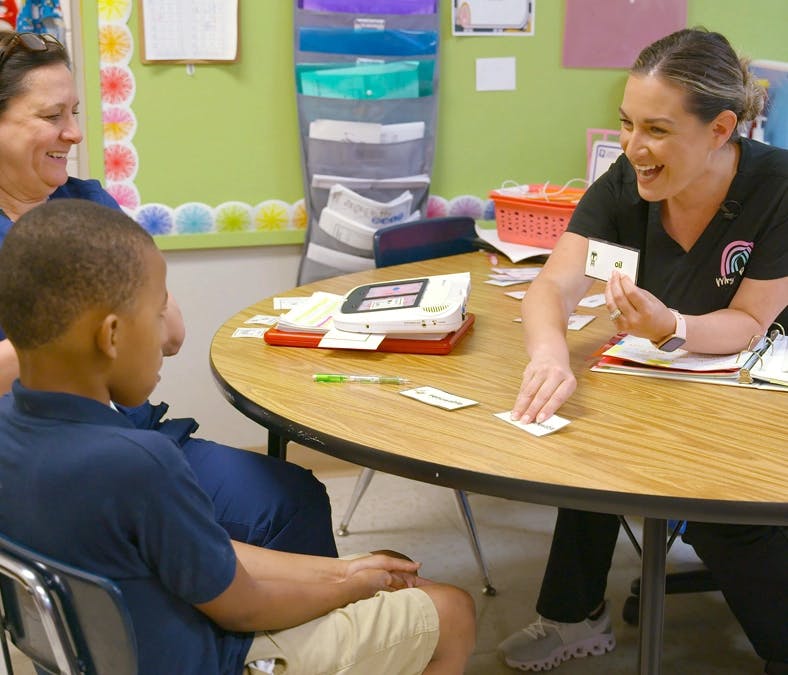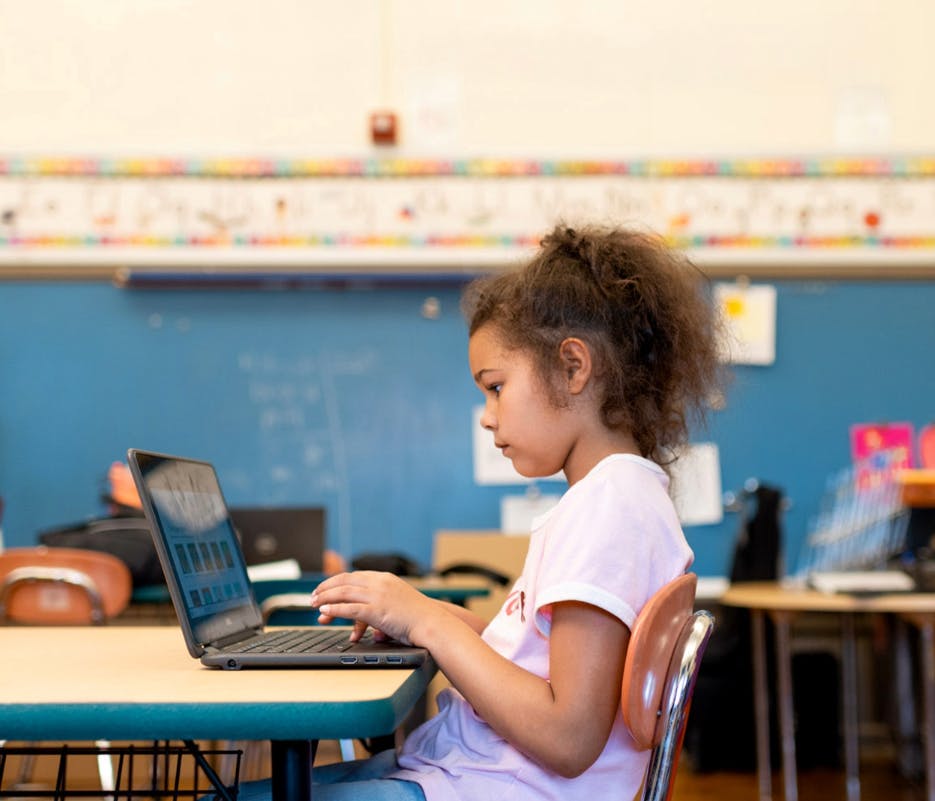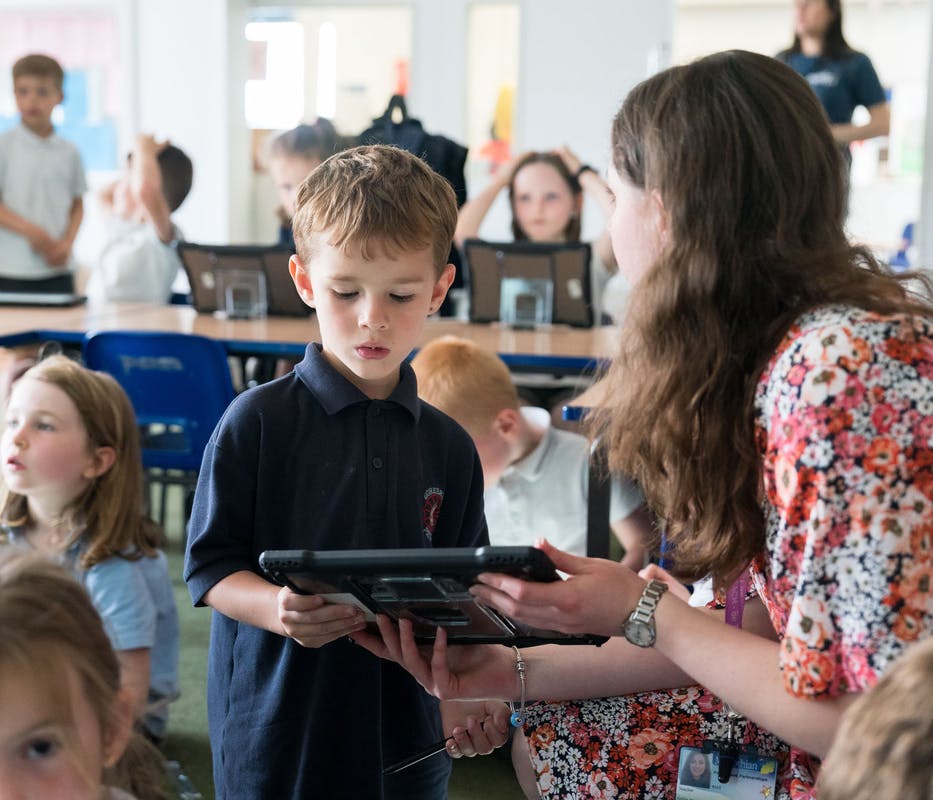Supporting students with disabilities requires flexible strategies that meet their needs wherever learning happens. Students in self-contained classrooms, resource rooms, or general education classrooms can all thrive with the right tools. This can help them build skills, stay engaged, and make meaningful progress.
In this article, we’ll explore how our solutions empower educators to support students across different school settings. With real classroom examples showing how students succeed when learning is tailored to their strengths, teachers can implement strategies for teaching students with disabilities effectively.
Self-contained classrooms

Specialized classrooms are separate from the general education setting. Students receive a modified curriculum and daily support from educators and paraprofessionals. This environment allows for individualized instruction and helps students make meaningful progress in ways that might not be possible in a general education classroom.
Example: Mrs. Rosalino’s self-contained classroom
In Mrs. Rosalino’s classroom, students are supported with a variety of tools tailored to their needs:
- SymbolStix Prime: Devin actively communicates with his teacher using communication boards and tracks school events with a personalized calendar on his device.
- Unique Learning System: Aaliyah engages with lessons that offer standards-aligned, age-appropriate content in all core subjects. Additional Science of Reading courses provide her with foundational phonics practice.
- News2you: Yuki develops literacy and communication skills while exploring social studies and science topics through weekly Current Issues. Her teacher starts each morning with the Today’s Weather activity to engage students.
These examples demonstrate how assistive technology tools for students with disabilities can enhance engagement and learning outcomes.
Resource room

Resource rooms are separate settings where students receive targeted, individualized support and specially designed instruction in a specific subject or skill for part of the school day. This allows students to focus on areas where they need extra help while still participating in general education classes for the rest of their day.
Example: Mrs. Brown’s resource room
In Mrs. Brown’s classroom, students use tools and strategies to build skills and confidence:
- Positivity: Marco earns incentives when he stays on task for a set time. Video modeling shows his peers engaged in prosocial behaviors, supporting Marco’s participation in reading groups.
- Classics: Camila builds background knowledge and is introduced to characters and vocabulary by prereading adapted chapters before joining her general education classroom.
- Inspire: Lucas receives targeted practice for IEP skills. Although he is in fifth grade, he completes fourth-grade fraction work before starting the fifth-grade unit, ensuring mastery.
These strategies show how differentiated instruction can be applied in a resource room to meet individual student needs.
Inclusion classrooms

Inclusion classrooms integrate students with disabilities into general education settings. Students work alongside their non-disabled peers while receiving support from special educators. This approach helps students develop academic, social, and communication skills in a natural, collaborative environment.
Example: Mrs. Kitchen’s inclusion classroom
In Mrs. Kitchen’s classroom, students engage with content through tailored support and tools:
- L3 Skills: During intervention time in small groups, Elijah practices skills using gamified activities aligned to his IEP goals assigned by his teacher.
- Unique Learning System: Mina participates in book buddy time with general education peers, bringing n2y Library books that align with the class curriculum.
- News2you: Bobby engages in social studies lessons covering current events. He accesses information through a differentiated newspaper with simplified text and symbol supports, ensuring comprehension and participation.
Every student learns differently, and classrooms that provide the right combination of tools, strategies, and individualized support help students thrive. Whether students are in self-contained classrooms, resource rooms, or self-contained classrooms, targeted solutions can improve communication, engagement, and academic progress.
By integrating assistive technology tools for students with disabilities and strategies for teaching students with disabilities that align with each student’s strengths and needs, educators can create learning environments where all students feel supported, confident, and capable of achieving meaningful growth.
